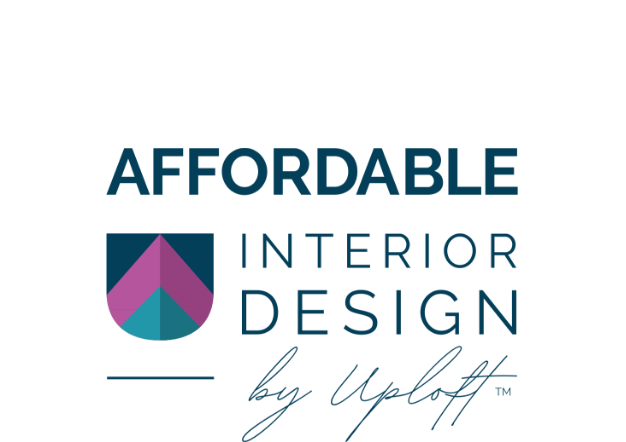WONDERING ABOUT WOODS
Whether you live in a studio apartment in downtown Manhattan or a five-bedroom home in rural Wisconsin, I’m willing to bet you have at least one thing in common with all my readers: an abundance of wood in your home. Wood is the most commonly used material for furniture and with good reason; when treated right, it’s solid, durable, and handsome. And because it’s so popular, there are an abundance of options. But all that choice can be overwhelming. The truth is, decorating with wood is really not that complicated. You just need a few simple rules to help you navigate the terrain.
Don’t get hung up on solid wood. So many of my clients — most of whom are working with a budget — ask for 100% solid wood and don’t even consider particle board or MDF. But that’s misguided! They have fallen prey to the false idea that only solid wood can be great quality and long lasting. It falls on me to burst their bubble (but at least it’s for their own good). First of all, 100% solid wood is very expensive, and it’s hard to find vendors who sell it. Even high-end stores have such a limited selection that you might end up compromising on your design. But most important (and most underappreciated) is how difficult solid wood can be to live with. Solid wood is typically not treated with a hearty veneer or stain, which would keep condensation rings and coloring marks and scooter dings from showing and sinking in. And the wood can be very soft — so soft that, if I jot down a note, I can see writing marks on the table afterward. So I never poo poo pressed wood, veneer, particle board, or MDF. All of these things have their place and they can be much more durable than solid wood.
Know your wood tones. There are three main wood tone families, each with their advantages and drawbacks.
- Dark woods. Dark wood is often described in terms of coffee (think espresso and cappuccino) or Ikea calls it black-brown. It was huge in the 1990s and early 2000s so, on the plus side, there’s a very large selection of pieces out there. That makes it easy to find something in your price range that can work well with your existing furniture. On the down side, most people find that dark wood makes their room feel too heavy, and frankly, it is quite dated. Plus, contrary to what you may think, dark wood actually shows imperfections pretty easily.
- Light woods. Light woods are typically called birch or beach. Ikea even has a light stained walnut I’d consider light wood. Although they feature in mid-century modern or Scandinavian décor, it’s hard to translate the light wood look here and now because the options at affordable vendors, such as Ikea or Overstock or Wayfair, don’t look very lux. Unfortunately, the light woods sold here almost only look sophisticated when they have a hefty price tag attached to them. High-end stores like Ligne Roset, BoConcept, Design Within Reach, and Blu Dot do have nicer light woods, but they’re very expensive and tend to look very modern, even sterile. And, like the dark woods, the light tones can look dated.
- Mid-tone woods. The mid-tone category incorporates woods with varying degrees of brownness. Some skew a little bit reddish, some skew a little bit ashy, but it’s that general mid-way color between light and dark that unites them. All the different options make it really easy to mix and match pieces in this family. My favorite wood to work with right now is walnut, which is known as Acorn at West Elm and, at Ikea, goes by the very original name of brown wood. It’s a mid-tone with a warmer finish like milk chocolate (not like dark chocolate which would obviously fall into the dark category). Walnut is so versatile — it can look more traditional in some spaces or more transitional; it can certainly look modern, and it definitely looks midcentury depending on the style that you’re choosing. I’m seeing more and more of it in the stores, so there’s no shortage of options.
Buy from the same family, not the same store. Here’s a simple rule when buying furniture – there’s no need to buy everything at the same store or in the exact same shade. The secret to a cohesive look that’s not too matchy matchy is to stick with the same wood tone family. So you can buy a black-brown dresser from Ikea, an espresso nightstand from Overstock, and a cappuccino bookcase from Crate and Barrel.
But (and here’s a big but), I’m really not a fan of mixing and matching across families. To make pieces in different tone woods look intentional and eclectic rather than a collection of hand-me-downs requires an amazing eye for design — in other words, a professional. So if you don’t want to spend money for professional guidance, and I don’t think you should have to, follow my simple and easy to use rule of sticking with one wood tone family throughout each room, and if possible, your entire home.
Take a pass on the rustic trend. Rustic utilitarian, modern rustic, rustic chic . . . whatever you call it, just don’t! Rustic woods are those that look very untreated. It’s wood that looks like it was sawed and slapped down next to your couch as a side table. Typically, it’s not smooth and has many visible imperfections. Sometimes it’ll give you splinters, and it’s often not stained, or if it is, the wood grain is still readily apparent. Honestly, I’m just not a fan of these pieces for 2016. They’re so very trendy and not really a sustainable choice for active households. If my kids spilled spaghetti on an untreated rustic wood table, it would leave a stain; I have no idea how I’d get the sauce out of the uneven surface; and don’t get me started on the splinters…
Know which elements in your home need to match. Want to follow my lead and buy walnut pieces but have dark hardwood floors? No problem! Your furniture doesn’t need to match the floors or the wood trim in your home. In fact, a little contrast can bring the pieces into focus. But the other architectural elements you add to the space should coordinate with the existing woods in the house. So if your floors are light wood and you want wood blinds, make sure to get them in a light tone too. And don’t forget the cabinets in the kitchen and bathroom, which should coordinate with the floors and trim, unless they’re painted a color. More on that in the next paragraph.
Find painted pieces to break up the wood. When everything is made of wood or has a visible wood grain, it can be a little overwhelming, or oppressive even. You need to break it up, but a lot of pieces like dressers, nightstands, end tables (and so many others) are mostly available in wood. Luckily, I have a workaround: the best and fastest way to break up all that monotony is to buy a painted wood piece. As long as there is no visible wood grain, it doesn’t count as a wood element but a color element, and it will provide just the right diversity you need.
So there you have it. You don’t need to worry about wood because there are so many way to make it work for you. And hopefully now you have the resources to help you out.
Interior Design for Every Budget. We Make Design Accessible, Not Intimidating.
© Affordable Interior Design by Uploft



